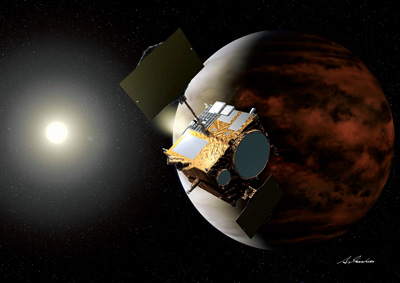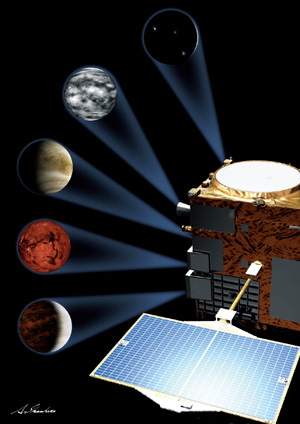TOP > Report & Column > The Forefront of Space Science > 2007 > Wind on Earth, Wind on Venus
![]()

Dreams Venus’ climate fascinates us because its wind is unique and provides us with a clue to understand climate formation on planets. Is there any tool to illuminate clearly what is happening on Venus? The PLANET-C (Venus Climate Orbiter) mission (Fig. 2) to be launched in 2010 by Japan will realize an ultimate dream of those interested in the planet’s fluidsphere. In the Cold War era, the US and USSR competed to send explorers to Venus. The European Venus Express is currently orbiting Venus. PLANET-C differs from these explorers considerably. PLANET-C is the Venusian version of a meteorological satellite. Like the earth meteorological satellite mentioned at the beginning, it can take moving images of the entire atmosphere on Venus. Its unique capability is to observe atmospheric movement in 3D using various instruments (Fig. 3) including a special infrared camera that can see through cloud that is impenetrable to the human eye. The mission will greatly advance our understanding on atmospheric circulation mechanisms, cloud formation, lightning discharge, etc., on Venus. 

This type of mission may become a Japanese specialty. We have many other ideas, such as the adoption of similar idea on Mars and Jupiter and detailed observation by floating balloon on planets. We would be delighted if people’s philosophy of the earth were to be expanded by the lively televising of picture of changing planets’ atmospheres. Will we become a society where ordinary people, not researchers, think about the earth’s energy balance and compare our weather to that of Venus and Mars when watching weather forecasts? Anyway, our first step is a successful PLANET-C mission. We must visit Akahoshi Shrine before its launch. Takeshi IMAMURA |




